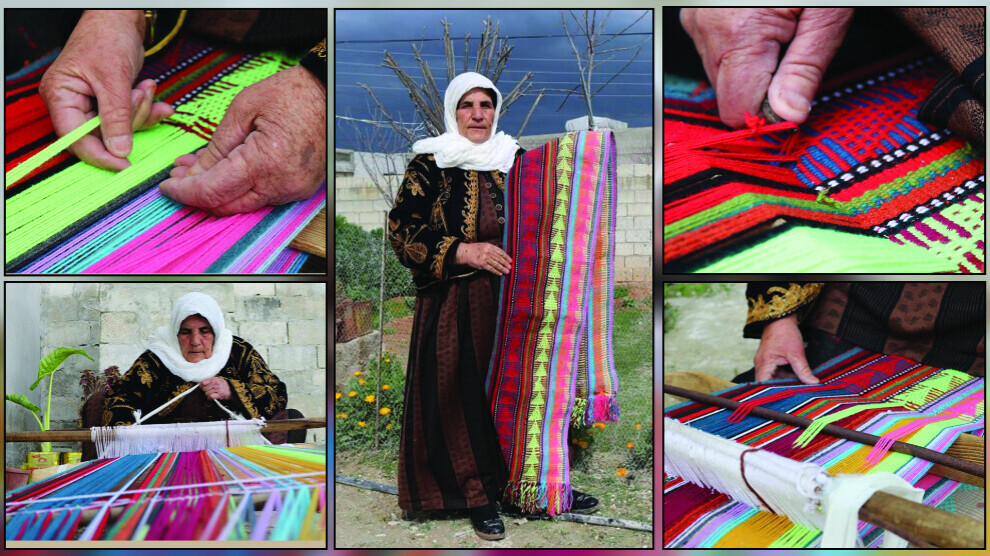Kawthar Hami of Manbij: Weaving rugs should be passed down to the next generation
Kawthar Hami living in Manbij Canton learned how to weave rugs and carpets from her mother. “Weaving rugs and carpets is an art that should be passed down from generation to generation,” she said.

SÎLVA Al-ÎBRAHÎM
Manbij- Weaving rugs and carpets is a centuries old craft. Despite the technological advance in weaving, many women living in the Manbij Canton, one of the cantons of North and East Syria, see weaving rugs and carpets as a cultural heritage and keep weaving. 60-year-old Kawthar Hami is one of them.
‘Motifs reflect Kurdish culture’
Weaving rugs and carpets is an ancient culture for the Kurds, Kawthar Hami said. “Kurdish women learn this art from their mothers. We want to preserve our mothers’ legacy. The motifs that we embroider on rugs and carpets reflect Kurdish culture. Today, rugs and carpets are manufactured by machines but we still weave handmade rugs and carpets.”
‘People have become less interested in weaving looms’
Speaking about what they do before weaving rugs and carpets, she said, “We first shear sheep and then turn sheep wool into thread. We use natural colors to dye thread.” Kawthar Hami told us that every house used to have a weaving loom. “However, people have become less interested in weaving looms now. I collected all the old weaving looms at my home. I went to the villages of Kobanê to collect them. Several days ago, I wove two rugs and started weaving another rug.”
Kawthar Hami and other women in Manbij teach their daughters and granddaughters how to weave rugs and carpets. “My neighbor teaches her daughters and granddaughters how to weave rugs and carpets to preserve this culture. In addition, mothers give weaving looms to their daughters as presents to preserve this art.” Kawthar Hami criticizes the new generation for not being interested in weaving. “I do not want this art to disappear. We should make more efforts to prevent it from disappearing. I call on all mothers to teach this art to their children.”
